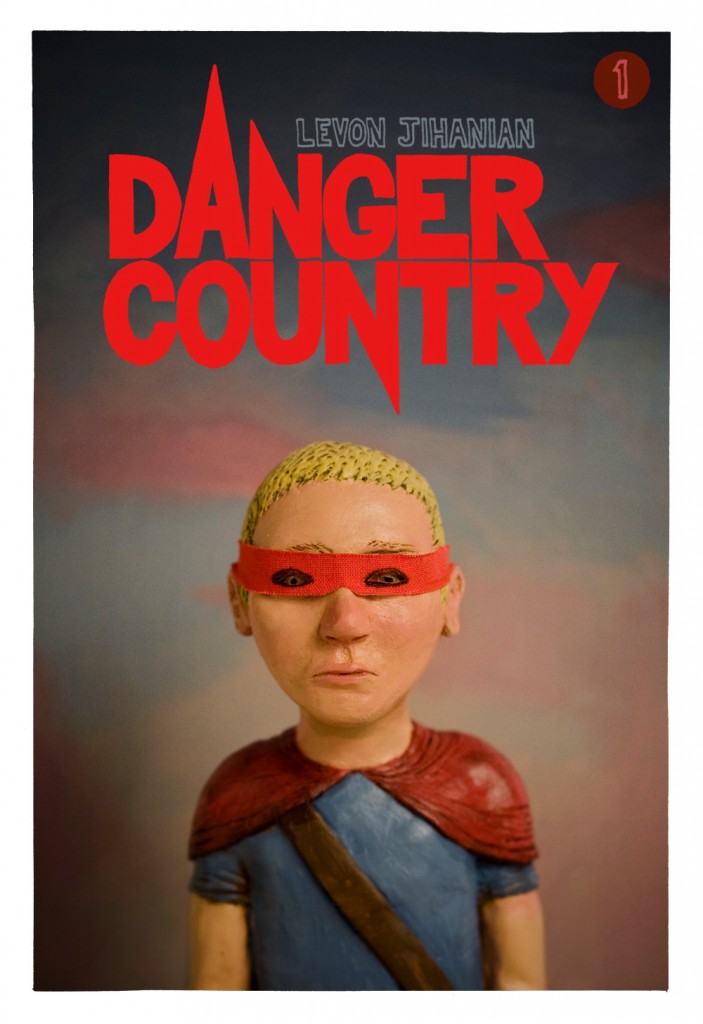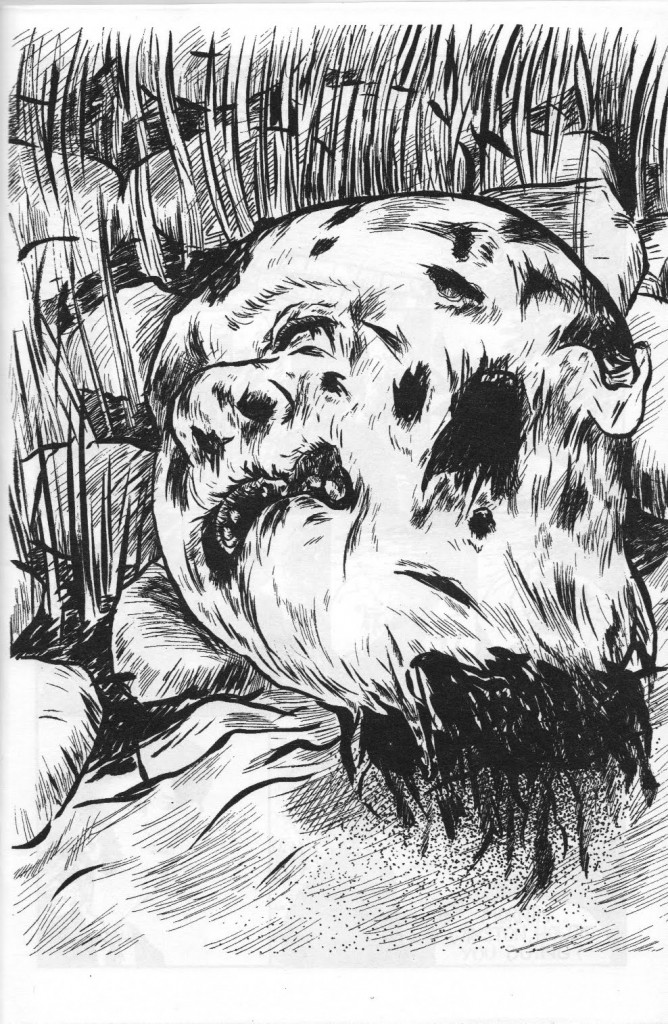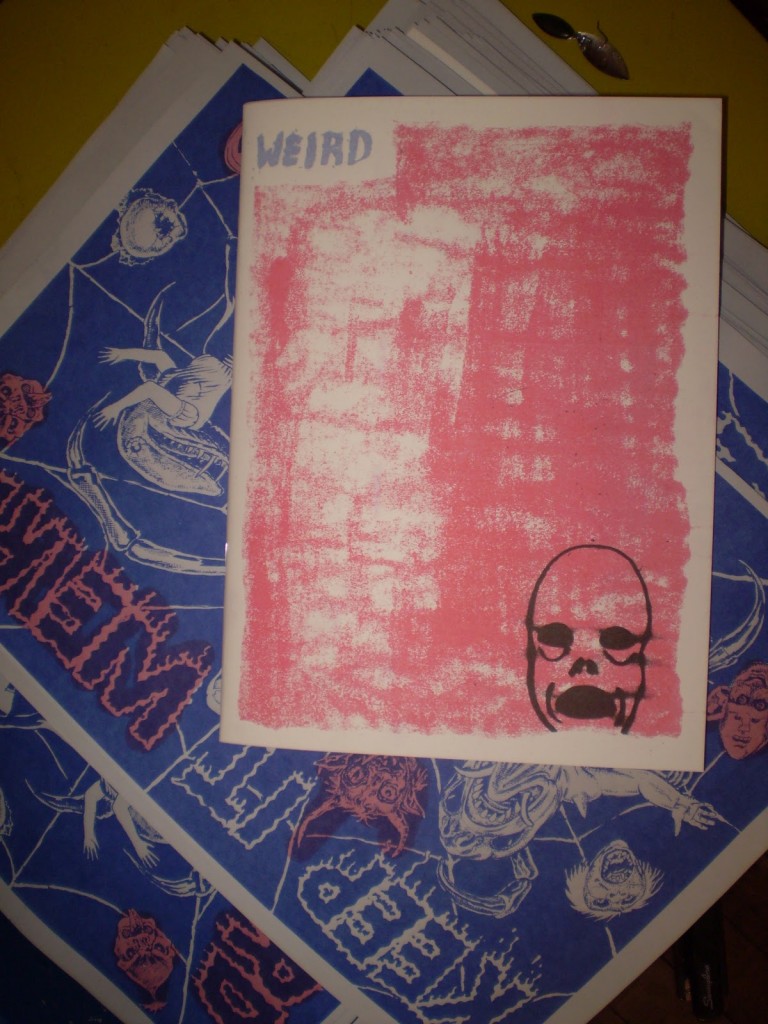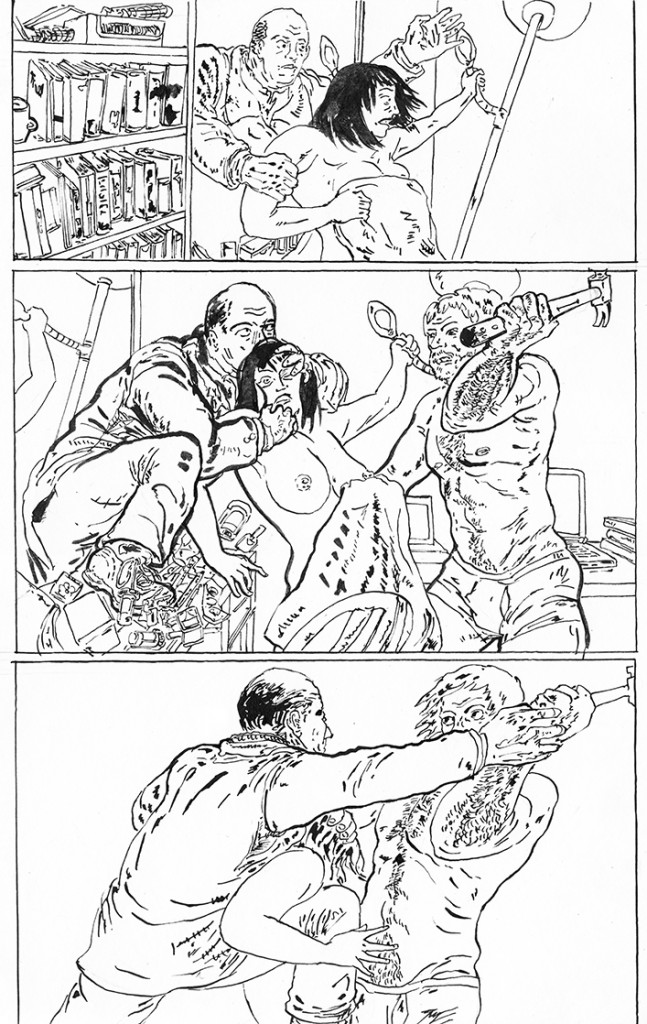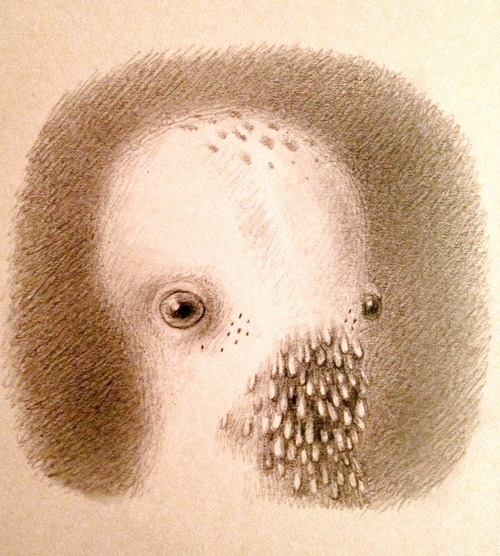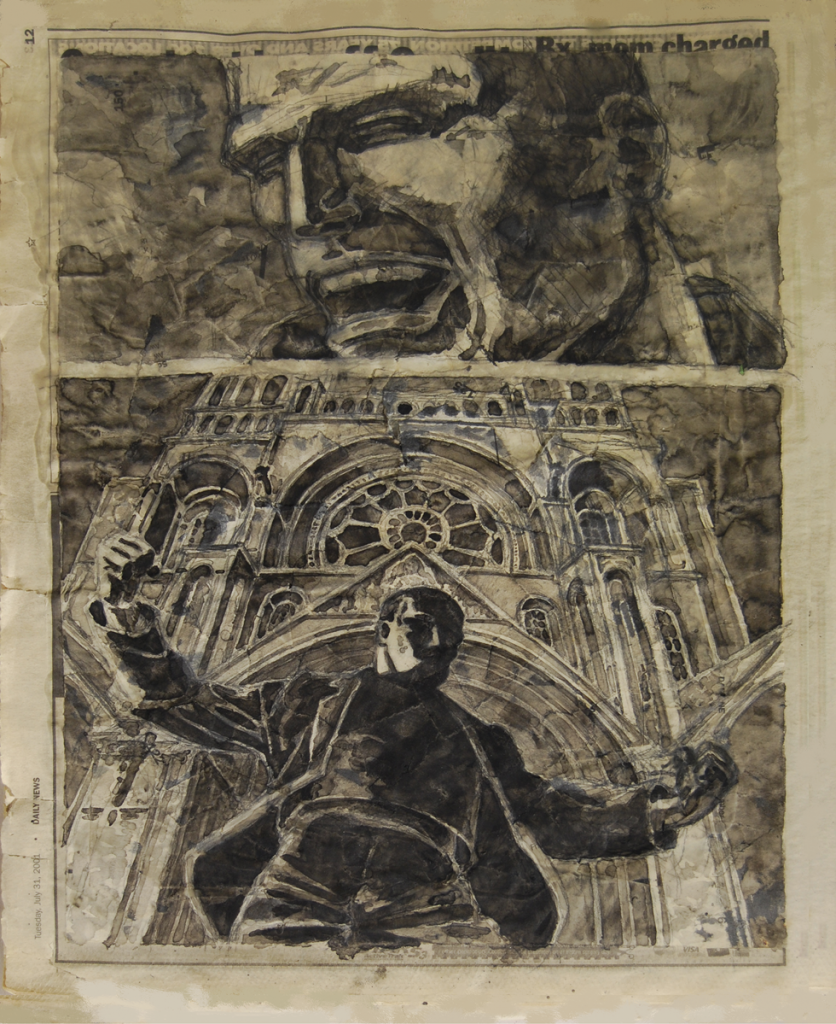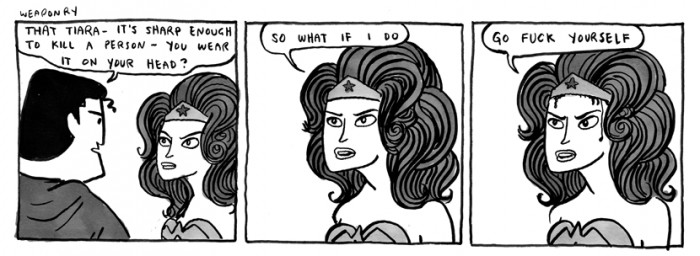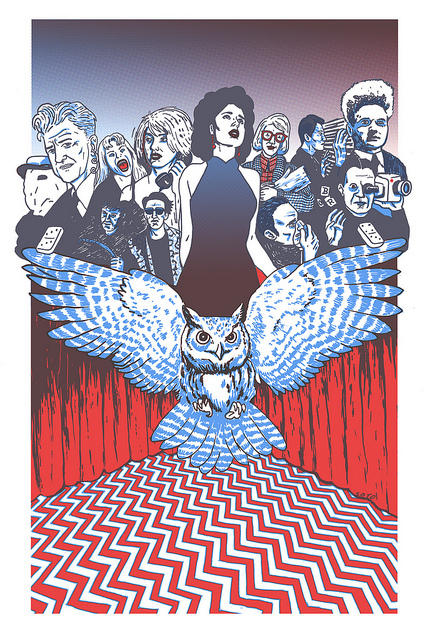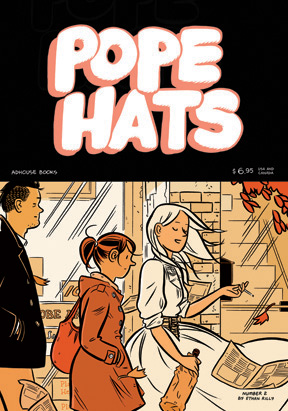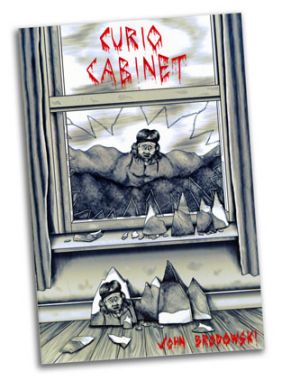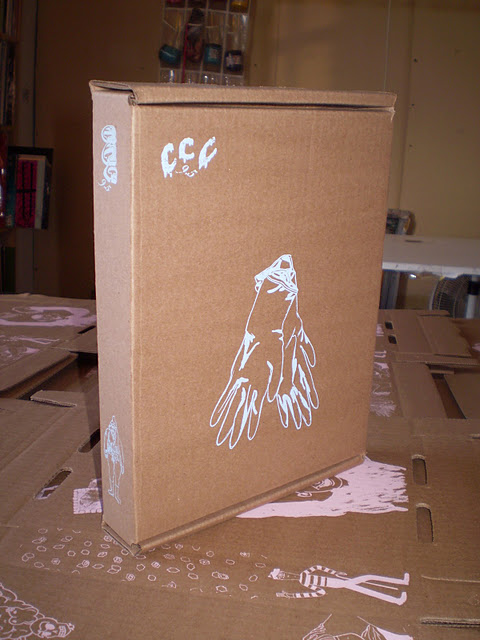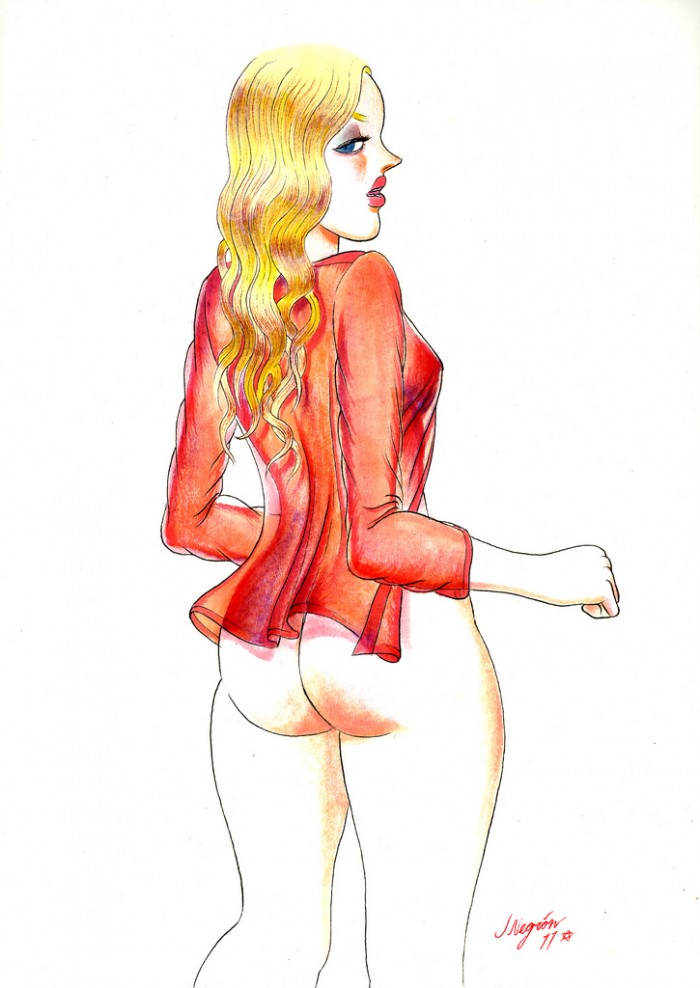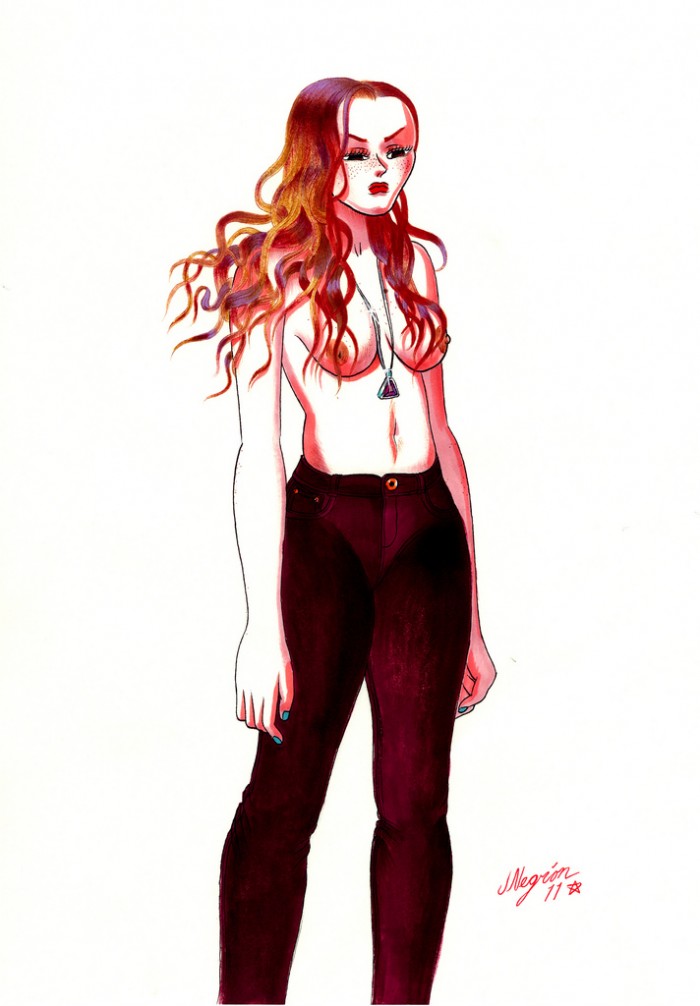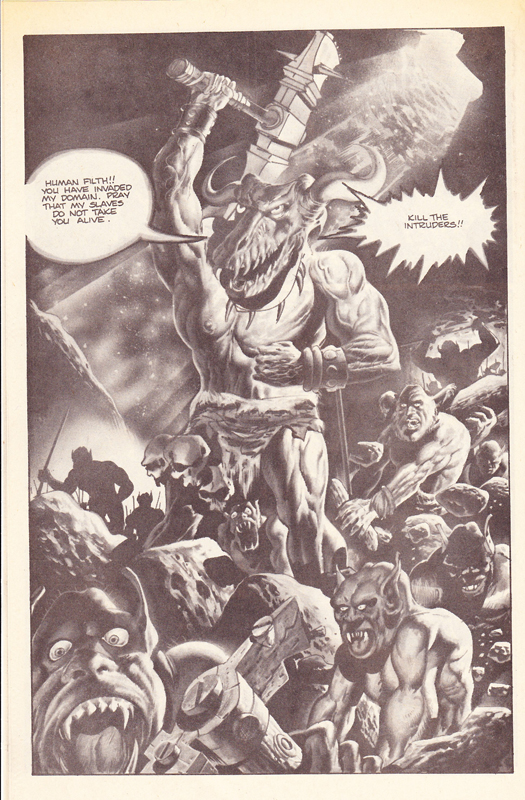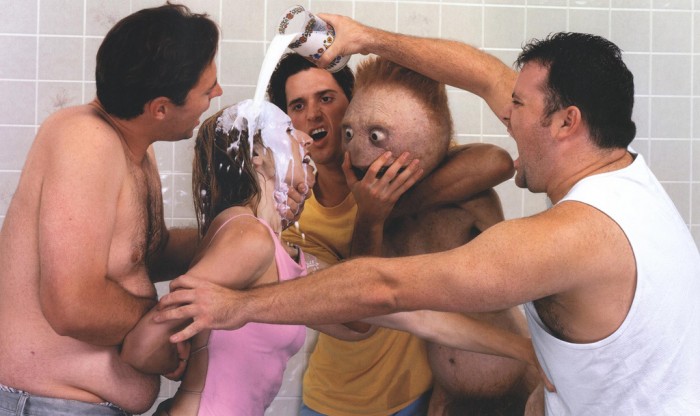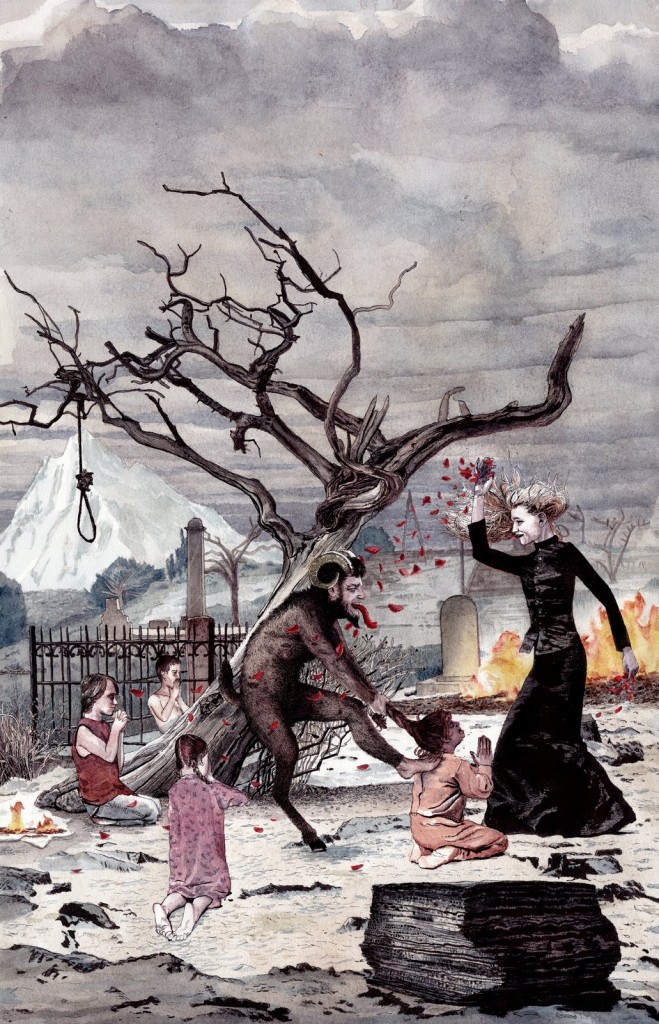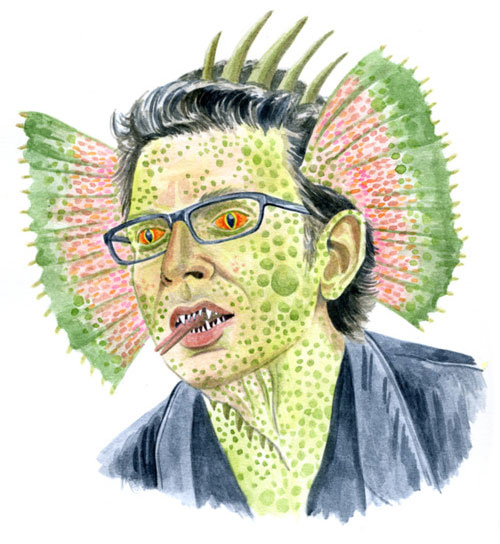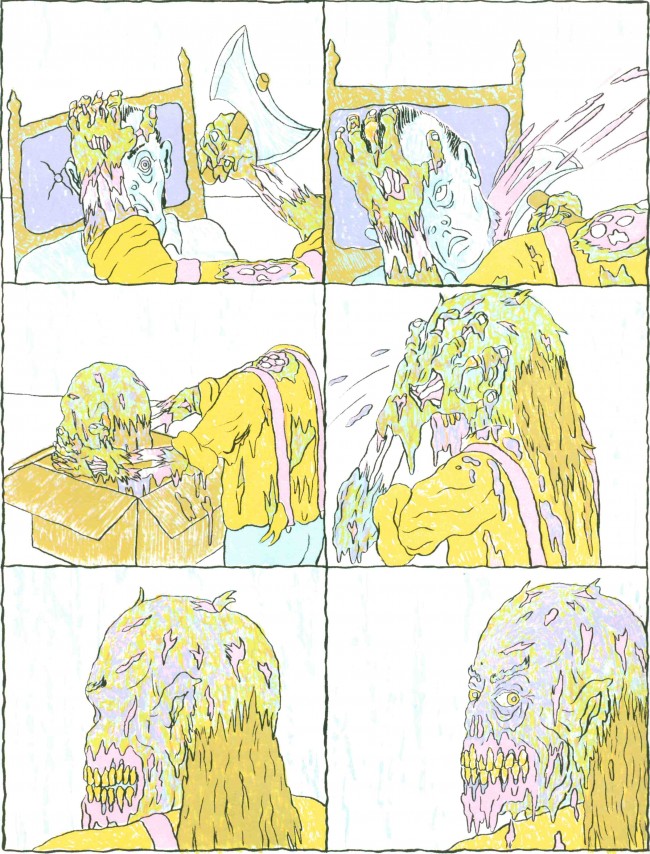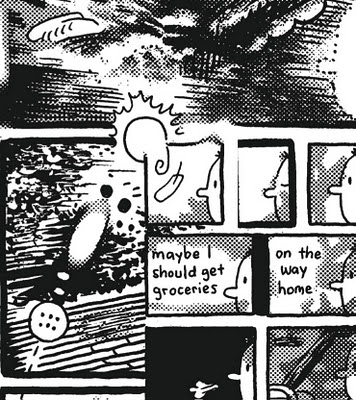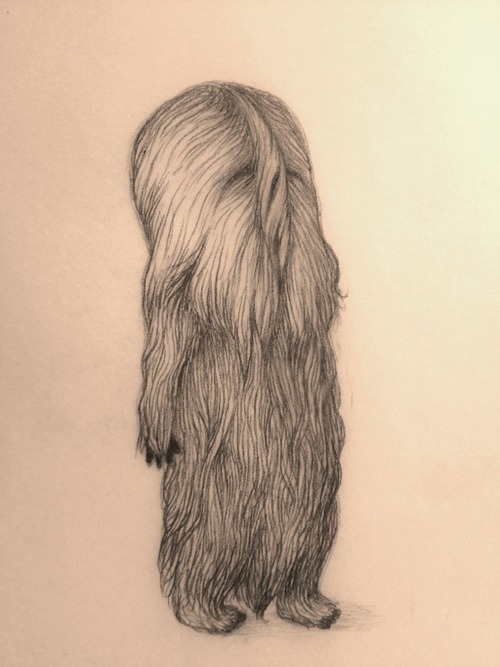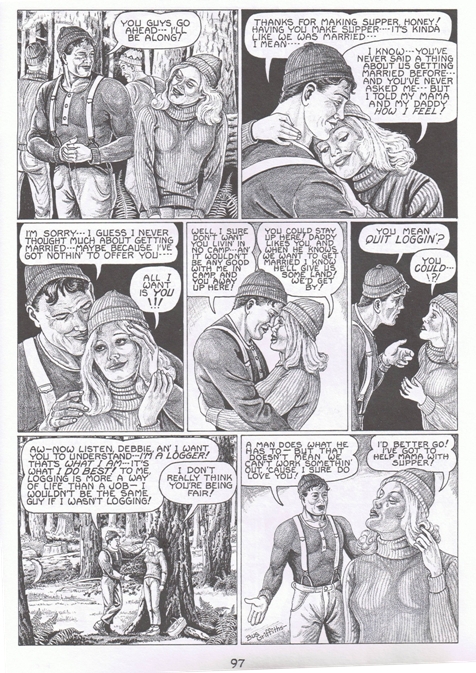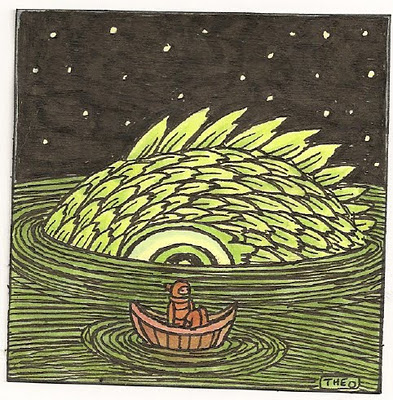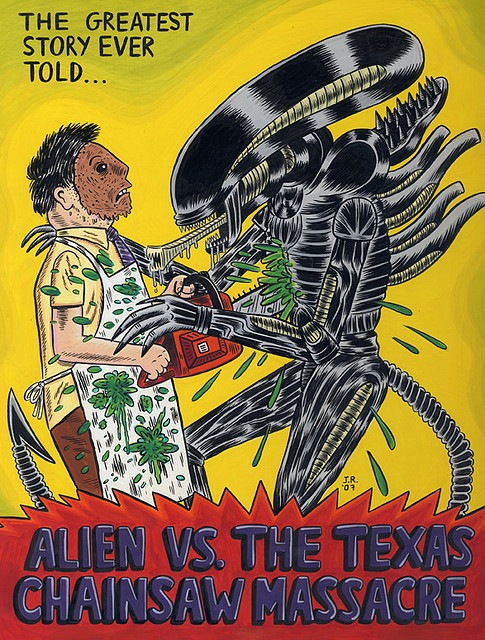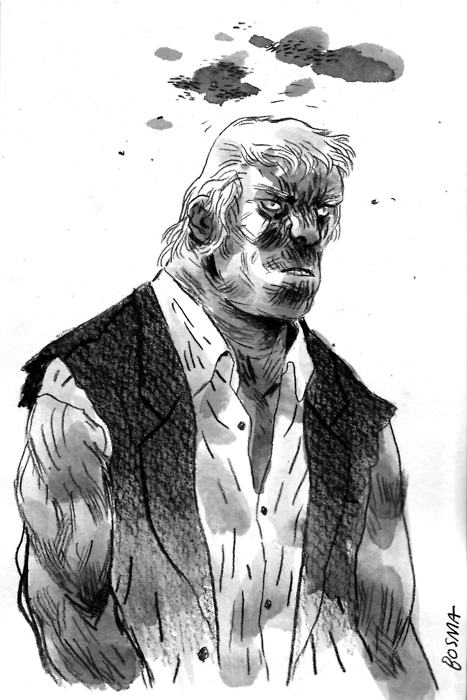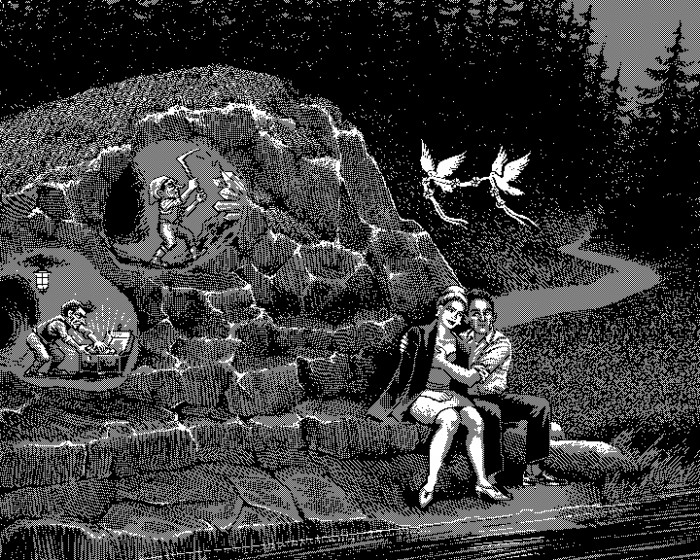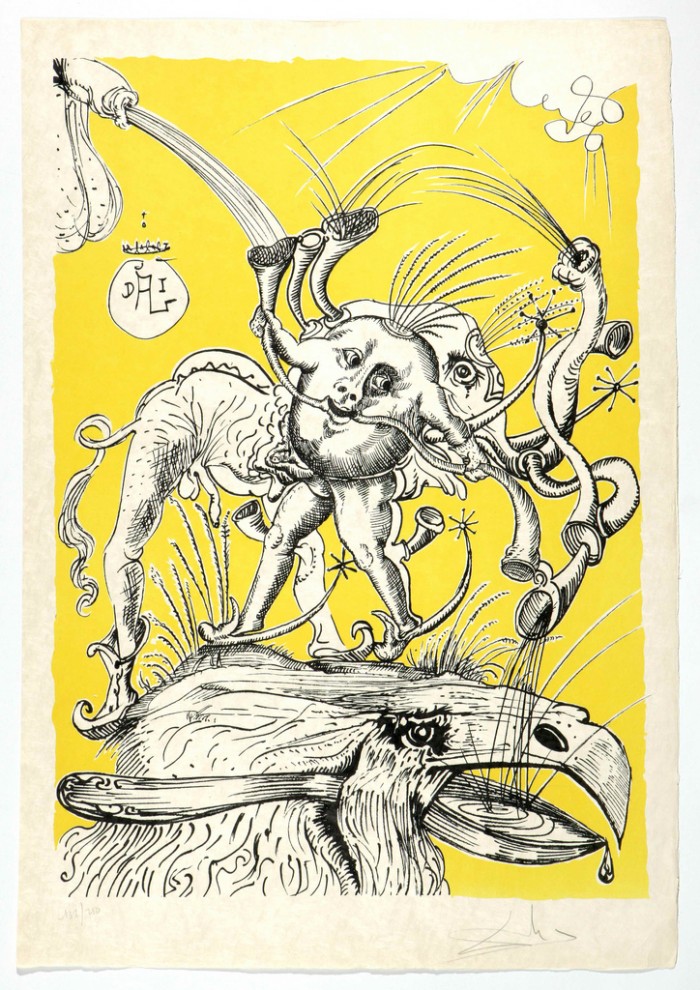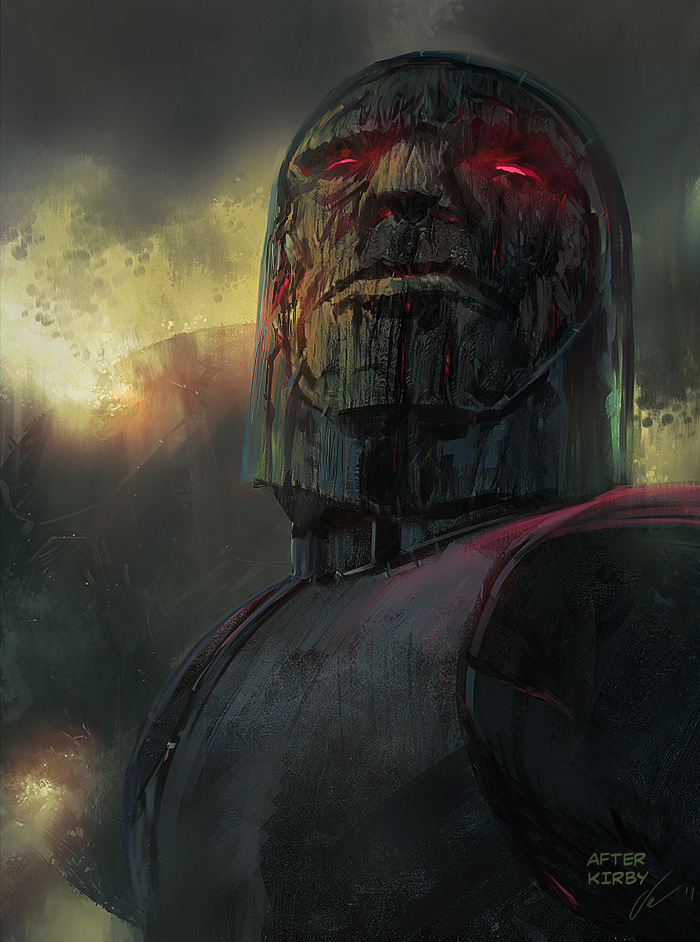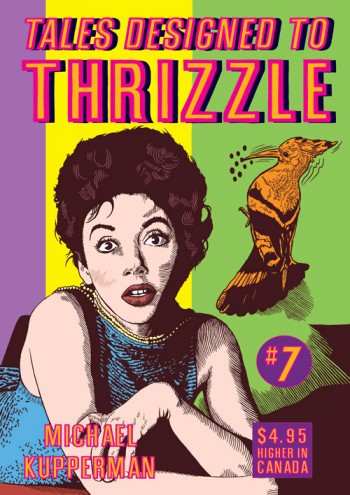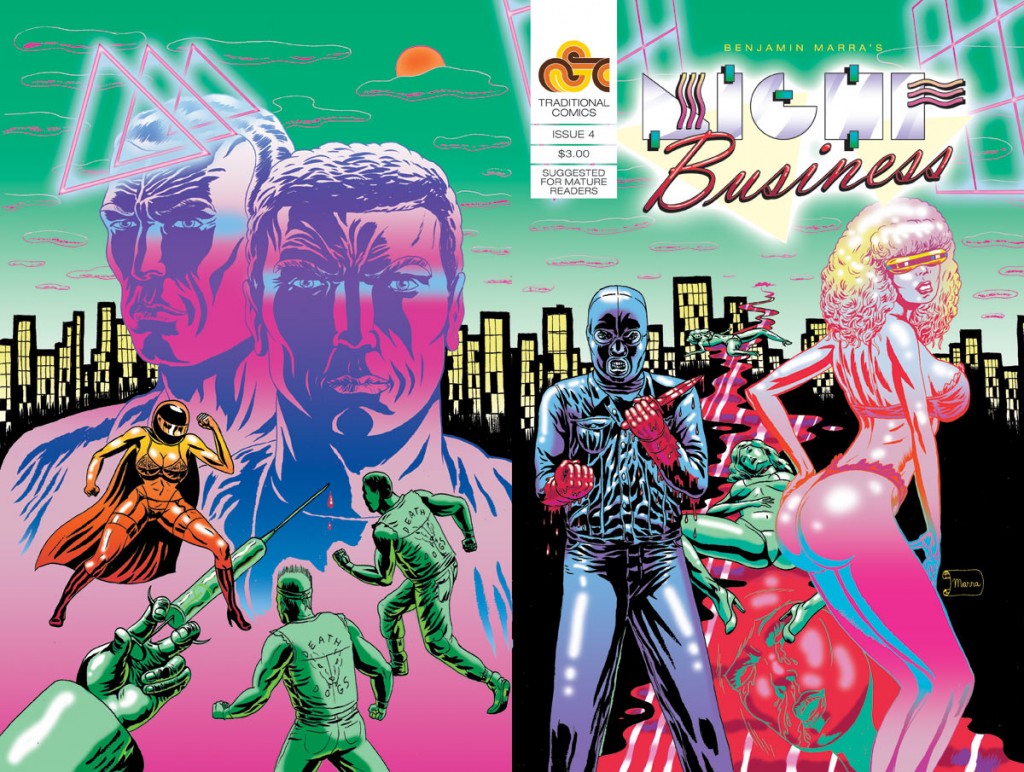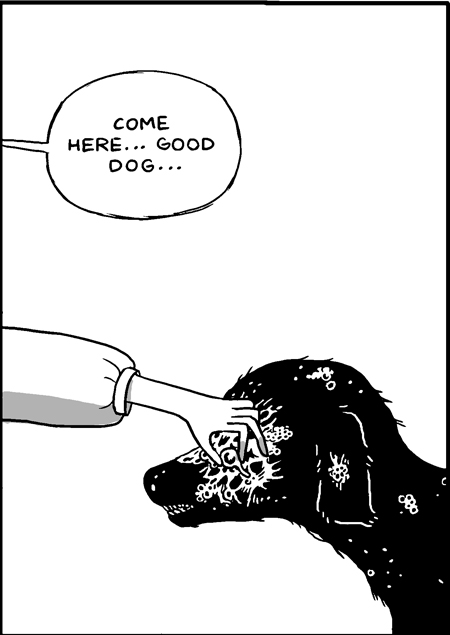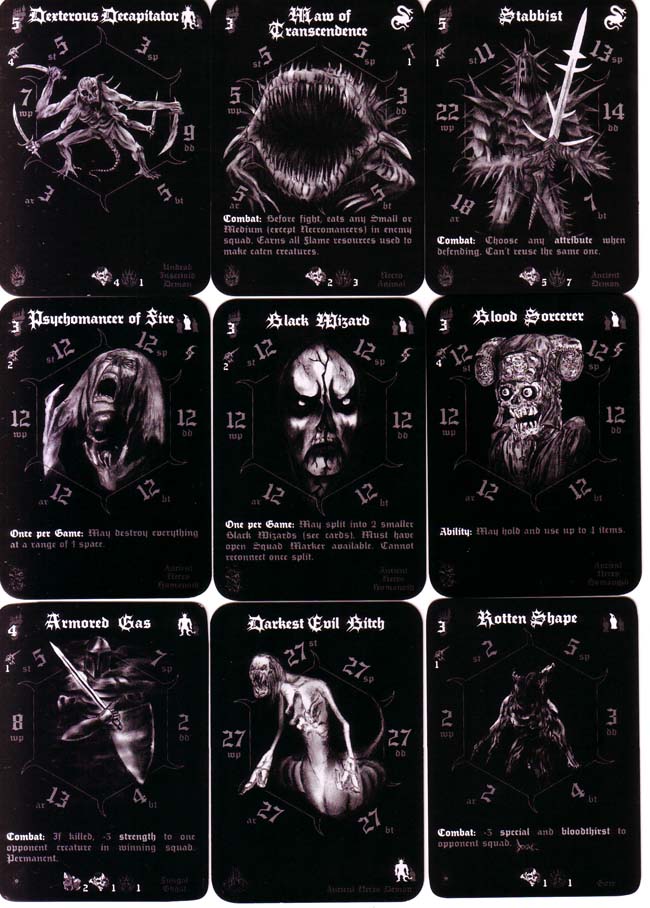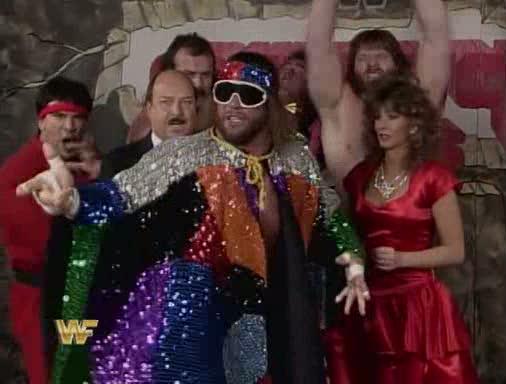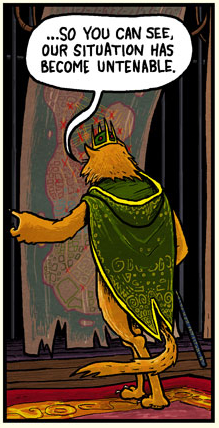SPOILER WARNING, SPOILER WARNING
* Though I’ve been watching Boardwalk Empire faithfully since the series premiere, I’ve only written about it a handful of times. I think that’s because my enjoyment of it is a pretty simple thing. It’s a sumptuously shot, dressed, and acted gangster period piece, featuring increasingly savage and memorable outbursts of violence, and starring real-world organized-crime pioneers like Lucky Luciano, Meyer Lansky, and Al Capone as “playable characters.” In that light my fondness for the show doesn’t require a great deal of explanation. Moreover, the growing pains of a young show striving for greatness, an occasional shaky hand with character development, and (particularly this season) some visible discomfort with its women characters (usually where the rubber meets the road for the really great TV dramas) would seem to defy attempts to delve any deeper.
* Until now. My my my, but that was a magnificent episode the other night. I was actually a bit scared to search for reviews afterwards, since I knew without looking that any episode that took things as far as this one did would be a make or break one for many viewers and reviewers. Put me in the “make” column for sure.
* It was the dreamlike power of the episode that did it for me. By “dreamlike” I don’t mean amorphous, illogical, or surreal, at least not in this case. I mean the heightened reality of dreams, in which words and objects are freighted with meaning through their proximity to the strangeness or momentousness of the events of the dream. It’s gonna take me a bit to explain this, so please bear with me.
* It reminds me of the tail end of Grant Morrison’s big Batman R.I.P./Batman and Robin/The Return of Bruce Wayne storyline, in which the presence of certain artifacts in Bruce’s life — his mother’s pearls, her murderer’s gun, the bell he used to summon Alfred to save his life on the night he decided to become Batman — cast shadows through time, affecting him again and again.
* It also reminds me of an astonishing episode of Little House on the Prairie I happened to get stuck watching while feeding my baby with the remote control out of reach months ago. I found out later that it was the two-parter that served as the finale for Michael Landon’s final season with the ongoing series. Landon’s character’s adopted son gets caught in the crossfire of a bank robbery and is rendered catatonic. Desperate for help, Pa Ingalls rides off with the son to seek a doctor, and the show becomes this series of sweeping vistas as he goes deeper and deeper into the wilderness, until finally the horse dies (I think) and they’re trapped where they’ve stopped, and so thinking they’ll die he builds an altar of stones to pray for divine intervention, and in the middle of a thunderstorm an old man appears to them to help them…It was all image, all emotion. It led with raw power and let the plot draft on its slipstream.
* In this episode’s case, that meant a few things. First there was the repetition of lines, fraught with meaning: “Jimmy, I have to go.” “I’ll remember! I’ll remember!” “There’s nothing wrong, baby. There’s nothing wrong with any of it!” “Then finish it, goddamn you. Finish it!” (Eyes Wide Shut used this same technique.) Other lines were repeated as actions: the bayonet Jimmy told the army recruiter he wanted to shove into the Kaiser’s guts became the knife he used to stab the Commodore in the stomach. Actions were repeated and inverted as well: Jimmy beats his professor for assaulting his mother, then attacks his mother years later. Music cues stretched across scenes, plotlines, and timeframes. Fades to black brought us in and out of flashbacks and simply from moment to moment. Textbook Freudian uncanny doubling. It’s as if all these things operated on a slightly higher level of existence than everyday reality, less fixed in time, playing themselves out on a different scale.
* People seemed more…vivid as well. I don’t want to say mythic, because these days that’s a loaded term indicative of self-conscious Joseph Campbellization. (I know, I know, the show went full-on Oedipus here, so they brought it on themselves, but this felt more raw and real than “modern myths” nonsense. The Commodore didn’t just attack Jimmy with anything, he stabbed him in the back with some kind of spear. And he emerged from nowhere, a towering furious mute Bad Father. Jimmy’s guardian Richard Harrow had similar trouble speaking in this episode — he was a dark angel quietly disposing of the slain father and drawing the curtains on Jimmy’s consciousness with a nod. Van Alden tells us of his life as a living indictment of his parents’ most deeply held beliefs, and ends the episode by fleeing like, I don’t know, Frankenstein’s monster, rejected by his creator. The vulpine priest continued to hover over Margaret, benevolently preying on her guilt in his collar and cassock. Even Jimmy’s increasingly pronounced limp (to my eyes at least), and the way he cloaked the wounded half of his body from his sleepy son with his black jacket like a human yin-yang or the Phantom of the Opera, lent him a monstrous quality as he went about his monstrous work in this episode.
* Objects took on a numinous quality too. Agent Sebso’s gun and shoes are presented as an indictment of Agent Van Alden in and of themselves, dredged up from the river and the past. Margaret’s daughter’s leg braces embody her painful future, and provide the support needed for Margaret and Owen to have the conversation that they’ll both instantly regret. Margaret views the subpoena she receives as literally a divine calling to account. Angela’s white dress and Gillian’s torn dress are loaded with messages for Jimmy. The nearby railroad track, the clanging of its gate bells, gave the passing of time itself new urgency — each moment received its own soundtrack.
* So yeah, just a ton of powerful images and sounds, all of which feel like half-understood things to me, their impact primarily emotional. If you can construct a story out of that stuff, you’ve achieved something pretty special.
* And the episode pretty much could have coasted on the Jimmy/Angela/Gillian material, but in addition, it was Nucky Comes Alive. I’ve read writers I respect (Matt Zoller Seitz, I believe) argue that in retrospect, Steve Buscemi, as enjoyable as he is in the role, was ultimately miscast. But if I had to pinpoint one reason why I disagree, it would have to be scenes like the one in which he more or less threatens to have Margaret, the woman he loves (and I don’t doubt that he loves her!), murdered if she decides to testify about his role in the death of her abusive late husband. It reminded me of an earlier Nucky highlight from this season: His slowly revealed rage at Eli as he pulls the rug out from his own “apology accepted” and browbeats his penitent brother out of any hope of rapprochement with his “get on your knees” speech. The fury in Nucky’s eyes in both these moments! Buscemi spends most of his time as Nucky in more or less harmless emotional modes: gladhanding politician, avuncular friend/father figure/husband figure, “heavy hangs the head that wears the crown” man at the top. But when you really press him, when you do something that strikes at his core — and I don’t even mean run-of-the-mill confrontations with adversaries; this is basically limited to betrayals by family — suddenly the teeth get bared in such convincing fashion that it looks like he could tear someone’s fucking face off. And I have to imagine that this is what the other characters pick up on in a world with Buscemi/Nucky calling the shots. It took a lot to stand out in an episode this epic if you weren’t part of the Oedipal drama at its center; Buscemi and Nucky had what it took.
* The episode also tied in with any number of plot threads I’d enjoyed, and even more interestingly that I hadn’t enjoyed, from the season so far. Take the status of the black workers, for example. During Nucky’s conversation with his sharp new lawyer Fallon, I marveled at how candid they felt comfortable being despite the presence of a third person in the room, Nucky’s butler Harlan. The black servant class is invisible to these guys until they’re needed for something, I thought. But then Harland pipes up at Fallon’s request…and suddenly he’s made himself an indispensable man in two of the longest-running plotlines on the show, Nucky’s corruption charges and Van Alden’s incipient psychosis. It’s like finding out that the last piece of the puzzle was in your hand all along.
* It was nice for Angela to get a last turn in the sun. Her murder by Manny Horvitz last week was appropriately awful — I was hit pretty hard when she begged for mercy on the grounds that she has a little boy — but at the same time she’d been so underutilized all season long that it felt less like the end of her story and more like a page from Jimmy’s. “Women in refrigerators,” in other words. I couldn’t help but feel that in eliminating a character that the show appeared to have little use for anymore, Horvitz was serving as a proxy for the writers. But Jimmy’s flashback also served as an origin story for a character who really needed one. How did a relatively free-thinking lesbian end up with a dude like Jimmy, even given societal pressures of the day? Well, she was a college-age kid discovering her sexuality as she went along, and anyone who’s been that age can tell you how many roads that can take you down before you find the right one, including roads that cut you off from where you really ought to go. In her case she was trapped like a fly in amber by her pregnancy, knocked up and affianced to a guy she likes a lot but probably didn’t and could never really love, pressured against ending either the relationship or the pregnancy by societal stricture, probably guilt about betraying a man at war, possibly fear of what he’d do when he got home given what she witnessed the night before he enlisted. It’s weirdly gutsy of the show to give us its best Angela episode of the season after the one in which it killed her.
* I’m also glad to see Van Alden reemerge. I have nothing against having a baby as a plotline for a fully grown-up character in a drama — it’s not like when you’re a few seasons into a comedy or soap about young people, the writers run out of ideas, and suddenly a character or two gets saddled with a bun in the oven that necessarily closes them off from all sorts of romantic and comedic possibilities. (Cf. this season of Gossip Girl, if you dare.) But the execution of Van Alden’s baby storyline has been every bit as limiting and stultifying as the worst such sitcom. He’s just been completely closed off from the action, existing almost on a show within a show. Gone was the Wrath of God figure from Season One, the guy who made me more nervous every time he was on screen than anyone else. Even to the extent that he threatened Nucky, it was at a remove, as a potential witness Nucky heard about third- or fourth-hand. (Of course, it could be worse — he could be Lucy Danziger, whom the baby storyline granted several mightily creepy-sexy nude scenes and then chased off the show entirely.) But now…but now! What the hell is he gonna do now? He’s a freaking fugitive murder suspect! He foreswore his oath, to be all Game of Thrones about it. A suicide run against Nucky as the architect of his downfall, a Travis Bickle attempt to “rescue” Margaret from inequity — who knows what comes next? That’s some delicious uncertainty is what that is.
* Circling back to the doubling I discussed earlier, although this time in far less uncanny fashion: Two of my favorite developments this season provide a direct compare-and-contrast in terms of styles of criminal leadership — and no, it doesn’t involve Nucky and Jimmy, but Chalky and Eli. I’m gonna spell his name wrong I just know it, but Dunn Purnsley, the charismatic chatterbox (played with silver-tongued malevolence by Erik LaRay Harvey) who threatened Chalky in jail without realizing who he was and then paid the price for it with a beatdown from Chalky’s grateful subjects, is subsequently recruited by Chalky as a valued henchman and the pointman for the strike. Which is great in and of itself because Purnsley’s a wonderfully entertaining character I’m happy to see stick around, like Richard Harrow last year, but also because of the way it demonstrates Chalky’s thoughtful and magnanimous approach to power. By contrast, poor Deputy Halloran is repaid by years of loyal, silent service to Eli with a beatdown of his own, followed by a genuinely menacing but ultimately idiotically transparent attempt at intimidation by Eli himself — all over a treason Halloran was undoubtedly far too stupid to even contemplate, much less commit. And all Eli’s thuggery earned him was precisely the betrayal it was designed to prevent. If you want an illustration of why Chalky’s at the top of his world while Eli’s a perpetual also-ran, look no further.
* I’d also like to sing the praises of Mickey Doyle, believe it or not. One of the weirdest performances on a show full of weird performances, Paul Sparks’s unctuous, nasal, giggling bootlegger has become a favorite occupier of screen time for me, for no more complicated a reason than that he’s funny and strange, moving and sounding like no other person on television. Take it where you can get it!
* Women-wise? This was a step in the right direction. Angela we’ve already talked about, but however predatory and loathsome she may be, it’s abundantly clear that Gillian was broken by the Commodore all those years ago. Her seduction of Jimmy was train-wreck awful but also pitiful — the way she had to repeat to herself that there was nothing wrong with “any of it” could only be referring to the whole freakshow of her life, whether or not she’d ever admit it. Ironically given the circumstnaces, it took some of the archetypal Jocasta out of her and made her into a human being we could understand.
* And while there’s virtually nothing I find more boring in a drama than Catholicism, I can almost appreciate its use in Margaret’s storyline. I think we’ve learned enough about her to understand that this isn’t a real religious awakening in her — it’s a lighthouse as she drifts in the fog of her own guilt over everything else in her life. As she convinces herself that this is the only outlet for her emotions and the only way to right the wrongs she’s committed, she could become as problematic as any legit fanatic.
* So there you have it: An episode that might could represent the moment Boardwalk Empire became Boardwalk Empire — an a-ha episode akin to “College” for The Sopranos, according to conventional wisdom, or “University” for The Sopranos, according to me. And it sets up quite a finale: As best I can tell, Chalky is still gunning for the KKK, Manny Horvitz is after Jimmy, Jimmy has got to be after Manny, Richard seems even more likely after Manny, Mickey Doyle could be up to no good, Van Alden could be up to god knows what, Nucky and Owen might come to blows…

